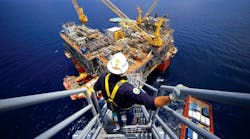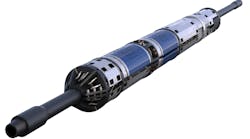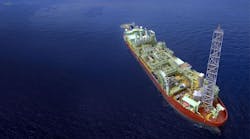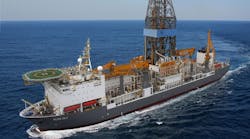Jan Rask
Marine Drilling Companies, Inc.
Penrod, Zapata, Keyes Offshore, Sonat, Dual Drilling, Reading & Bates, Teledyne Movible, Transworld, Western Oceanic, Arethusa Offshore. Sound familiar? They are among a long list of offshore drilling contractors that are no longer in business as a stand-alone entity.
The reasons vary, but ultimately there was not enough room for them to operate profitably in the drilling industry over the last 20 years. Although the offshore petroleum industry grew steadily in the 1960s and 1970s, once the mobile offshore drilling unit (MODU) supply began to outstrip demand, consolidation began to occur.
Today, the industry has about 15 drilling contractors left in the offshore drilling industry. The lesson here is that industry consolidation takes place because it makes sense and people recognize it, or it occurs by default.
Consolidation is leading to industrialization of the offshore drilling industry. A little background into the drilling industry is appropriate here. The drilling industry is a service industry that is extremely cyclical and very capital intensive. Consequently, when market conditions favor the drilling contractor, it can be a very profitable business. When market conditions are poor, the business is incredibly poor.
The cyclical nature of the business has often resulted in demand and supply being misaligned. This misalignment has produced financial restructuring over the last 15 years within the drilling industry. About 25 companies have disappeared altogether.
Long deep cycles
Between 1980 and 1984, the offshore drilling fleet virtually doubled, primarily through speculative newbuilding, and suffered the consequences for the next 15 years. The rigs were built on the assumption that oil prices would continue to escalate. Instead, the oil price eroded and collapsed by 1986, and the demand for offshore rigs fell to a third of the supply.
Since 1986, demand and oil price have shown close correlation. Today, there are about 600 rigs in the fleet, but the average age of the fleet is over 20 years. Until recently, the industry has not seen much newbuilding. The first half of 1999 demonstrated oil price's impact on demand, where utilization fell by almost 150 rigs, compared to early 1998. Since then, the price of oil recovered, natural gas prices skyrocketed. The demand for rigs increased.
Utilization drives day rates. When utilization approaches 100%, day rates begin generating profits for drilling contractors. In general, the return on capital in offshore drilling is dismal over the life span of a rig, unless rigs are purchased and sold opportunistically. For example:
- A newbuild 300-ft jackup delivered in 1984 for a price of about $50 million has generated a return of only 2% before taxes.
- In that same period, semisubmersibles provided a return of 0%.
The reasons for these poor returns are the combination of low average utilization, and during downturns, extremely low day rates. Roughly $10 billion was spent between 1997 and 2001 on newbuilding. It is safe to assume that another $50-60 billion in investment will be required to replace these rigs over the coming years. Even if it is done over the next 10 years, the amount needed annually will be $5-6 billion.
Industrialization
Offshore drilling was a growth industry during the 1960s and 1970s. Since the early 1980s, it has matured into a cyclical service industry periodically requiring huge investment. The answer to this need is industrialization - a process that smooths out business peaks and valleys, allowing greater focus on operational issues, service aspects, and safety.
Unfortunately, there are no safe measures to provide stability in offshore drilling. Offshore drilling contractors cannot economically hedge by purchasing oil futures or options on Nymex (New York Mercantile Exchange) like oil producers can. Again, it is probably not safe to purchase shipyards or workboats or other neighboring services. These businesses are usually cyclical, not counter-cyclical. The only remedy is long-term contracts, when the market provides that luxury, and a strong balance sheet.
How do drilling contractors get there? The answer is consolidation, leading to industrialization. Consolidation with the objective of maximizing day rates would be guaranteed to fail. Instead, the objective should be to maximize the term of the contracts with a reasonable return on capital invested. This is a completely different risk/reward profile.
Business model
Instead of requiring $200,000/day to build a new semisubmersible, contractors could build the same rig and charge perhaps $130,000/day, but over the life of the asset. In other words, if contractors can eliminate or at least reduce uncertainty, offshore drilling contractors can accept a lower return on invested capital. The advantages for the oil producers include:
- Better cost predictability with even day rates
- Continuity leading to safer operations
- Better-maintained equipment, reducing downtime
- More focus on training personnel, reducing downtime.
The industry is beginning to see a modest measure of industry consolidation, at least in the deepwater segment. However, in shallow waters, the rig business is much more fragmented. There is clearly room for consolidation.
Now is that time for further consolidation. Rig contractors are facing a huge investment need over the next few years. The world drilling fleet has never been older.
The industry has experienced a strong comeback in commodity oil and gas prices, which has fueled an improving drilling market. At this stage, rig day rates are approaching - and will perhaps during a short period of time, exceed - replacement cost day rates. In an unsophisticated market scenario, without discipline and patience, contractors will order new rigs against record day rates for a 3-5 year period. If rig contractors are able to consolidate their number to something like 4-6, from 11 in the US today, it appears that both drilling contractors and oil producers will win in the long run.
In summary, industrialization means a focus on service and building MODUs because the customer demands them, not because the drilling contractor can afford them.
Author
Jan Rask is the President and CEO of Marine Drilling Companies, Inc.




